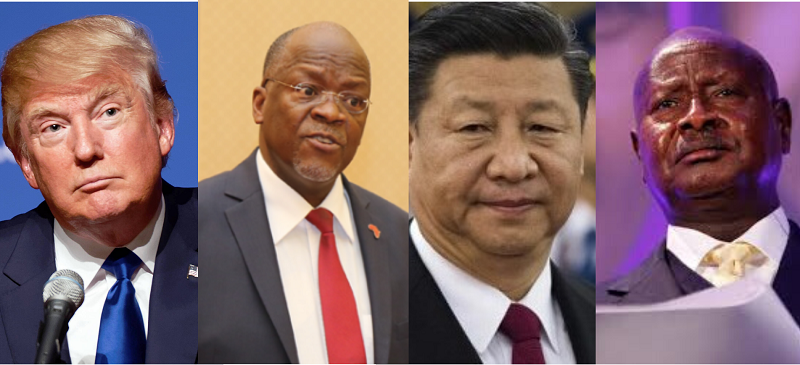Correspondence: “Why don’t you pick on someone your own size?”
May 15While racism, sexism and homophobia are no longer tolerated in society, the same rule does not stand for sizeism. Rather, the prejudice seems to have slipped under the radar, writes 19-year-old Commonwealth Correspondent Alisha Lewis from Auckland, New Zealand.
 Size. It’s a funny thing. Men brag about muscles and women have surgery to inflate – or deflate – various body parts.
Size. It’s a funny thing. Men brag about muscles and women have surgery to inflate – or deflate – various body parts.
We all wish we had mile long legs or biceps the size of cantaloupes. It would seem we’ve developed a bit of an obsession with size. And while it can mean a lot of different things depending on the context, one thing’s clear: when it comes to the size of that new pair of jeans, smaller is most definitely better.
It’s ironic though, because as a global society, we’re all getting bigger. Yet our crusade against the big F is relentless. We don’t want to see what’s right in front of our faces. We’ve embarked on a witch hunt which has ultimately led to a new form of discrimination.
Sizeism. It’s discrimination based on the size of a person’s body and it basically means that lately, the old saying, “pick on someone your own size” has taken on a whole new meaning.
Many people have never heard of sizeism. It’s only just being recognised as an actual type of discrimination, yet it’s arguably one of the most prominent forms of discrimination in modern day society.
Back in 2007, American businessman Donald Trump lashed out at television personality Rosie O’Donnell, saying, “If I were running ‘The View’, I’d fire Rosie. I’d look her right in that fat ugly face of hers and say, ‘Rosie, you’re fired’”.
Trump got away with saying this – the comment was simply swallowed up in the war of words between him and O’Donnell. But replace the word ‘fat’ with the word ‘Asian’ or ‘black’ and there would have been hell to pay.
While racism, sexism and homophobia are no longer tolerated in society, the same rule does not stand for sizeism. Rather, sizeism seems to have slipped under the radar.
It’s been a gradual progression. Fat people have always been fair game for nasty jokes and cruel taunts. It’s often the large kid at school that gets picked on. And then, even later on in life, when they think they’ve escaped the schoolyard bullying, workplace discrimination based on a person’s size is all too common.
Imagine if Trump really had been Rosie O’Donnell’s boss – she wouldn’t have stood a chance. Comments like Trump’s are allowed to fly within the workplace, leaving larger people humiliated and with very few rights when it comes to being hired, fired or promoted.
In a 2006 survey conducted by Yale University, of the 2,000 overweight women that took part, 53 per cent said co-workers stigmatised them and 43 per cent said employers stigmatised them. This basically translates into the fact that these women were not hired, not considered for promotions, fired, teased or harassed on account of their weight.
What is even more unfair is the fact that those who weigh in heavily also end up leaving with lighter wallets. According to a study by Tennessee State University, obese men and women can expect to earn an average of one to six per cent less than their skinnier counterparts – with overweight women being the biggest losers when it comes to incomes.
So where does this stigma come from? As usual, the main culprit is the media. The media constantly portrays fat people as clowns – objects of humour not to be taken seriously. The Fat Girl is never the leading lady. Instead, she’s always been ‘the best friend’ – forever on hand with a tub of Ben & Jerry’s to comfort the star when bad-boy boyfriend is behaving badly. Meanwhile, The Fat Guy’s role has been to provide humour, make people laugh while the sweetheart with the six-pack gets the girl.
It’s clear that, like most kinds of prejudice, sizeism is a product of ignorance and rigid pre-determined social norms. We tend to attack anything outside what society defines as normal. With a rapidly growing overweight and obese global population, this fear of the ‘F’ word has caused people to lash out worse than ever.
After years of cruelty and discrimination, overweight people are finally starting to fight back and speak out against sizeism. In the United States, overweight people have formed a Fat Liberation Movement. It’s been described in the media as a new civil rights movement. It’s a major deal, probably because almost a third of Americans are overweight or obese and yet America probably has the strongest stigma surrounding size.
The Fat Liberation Movement is a grassroots effort to change societal attitudes towards fat, overweight and obese people. The movement fights to expel myths surrounding fat and fat people. They are affiliated with and help organise conferences such as ‘the Association for Size Diversity and Health’, the ‘No Lose Annual Conference’ and ‘Fat Girl Speaks’ – all aimed at increasing understanding and empowering those who have been targeted.
What has been a most impressive improvement in regards to fat acceptance is the effort made by various media to increase awareness of the issue. Online zines such as ‘Fat!So’ and ‘Figure8’ have been created, as well as blogs including ‘Big Fat Blog’ and ‘The F Word’. Performance art groups like Big Burlesque, Fat Bottom Review and The Padded Lillies have recently emerged and star large women and men. Their success shows that attitudes may finally be changing.
The biggest change however, has been in our most mainstream form of media – film and television. Overweight and obese actors have been given lead roles that are challenging, inspiring and also explore the discrimination faced by fat people – such as Gabourey Sidibe’s performance in the Academy Award winning film Precious.
The character of Jane in the new television smash hit Drop Dead Diva is another breakthrough role in which the lead actress is overweight. The series also discusses issues surrounding sizeism – there is even an episode in the first season which looks at employment discrimination based on size.
After years of sweeping sizeism under the carpet it seems we are finally willing to take some steps towards building tolerance and acceptance. It’s time to stop the witch hunt and put down the pitch forks.
Sizeism may be a huge problem but really, all we really need is a little bit of understanding.
……………………………………………………………………………………………………………………..
Note: The opinions expressed in this article are those of the author and do not necessarily represent the views of the Commonwealth Youth Programme. All articles are published in a spirit of improving dialogue, respect and understanding. If you disagree, why not submit a response?
To learn more about becoming a Commonwealth Correspondent please click here.



